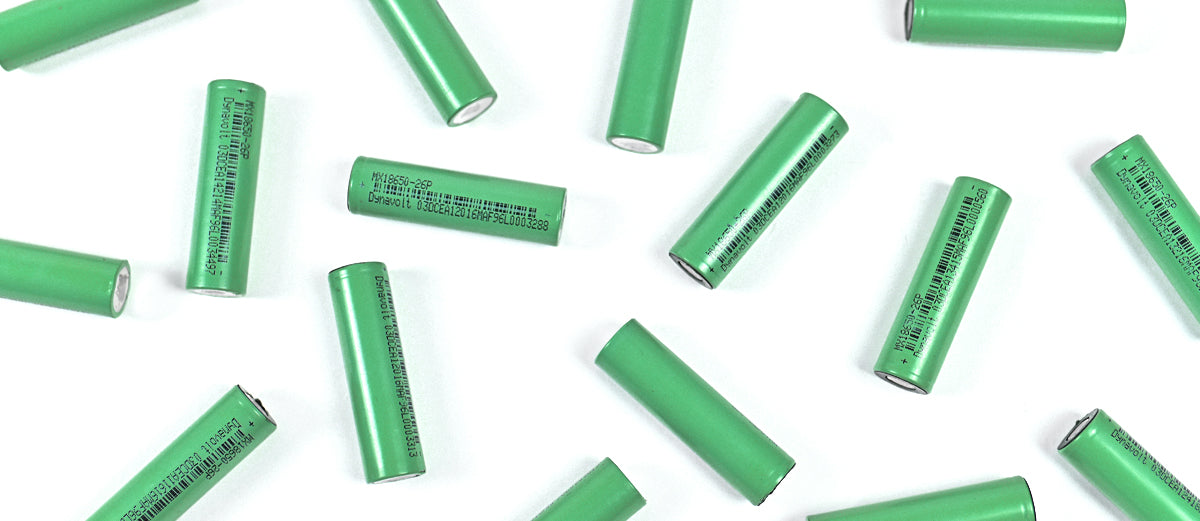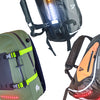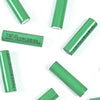Ogniwa litowo-jonowe Dynabat - baterie o optymalnej charakterystyce

Ogniwa, inaczej zwane bateriami. Są to nośniki energii elektrycznej, które możemy rozładowywać i na nowo ładować.
Bateria w każdym pojeździe elektrycznym, czy to hulajnodze elektrycznej, czy też samochodzie elektrycznym, składa się z wielu połączonych razem ogniw (małych bateryjek).
Najczęściej stosowanym rodzajem ogniwa, stosowanym w elektrycznych pojazdach, jest ogniwo litowo-jonowe 18650.
Nazwa "litowo-jonowe" wynika z tego, że bateria do działania używa jonów litu.
18650 wynika z wymiarów baterii. 18 to szerokość baterii w milimetrach. 65 to jej wysokość w milimetrach. 0 oznacza, że bateria jest cylindrycznego kształtu.
Ogniwa litowo-jonowe ze swojej natury charakteryzują się świetnym stosunkiem wagi do pojemności, stąd też stosowane są we wszystkich przenośnych urządzeniach, a także pojazdach.
Pojemność ogniwa, to inaczej ilość energii, które te w sobie zawiera.
Wielu klientów, nie zastanawia się nawet z jakich ogniw zbudowana jest bateria w ich pojeździe. Wynika to z braku świadomości. My w naszym wpisie, postaramy się wam przybliżyć, czym charakteryzuje się dobre ogniwo, a tym samym dobra bateria (akumulator).
Całkowita specyfikacja każdego z ogniw 18650, składa się z kilku stron A4. My, w naszym wpisie opiszemy kilka najważniejszych parametrów i cech.
Podstawowym parametrem ogniwa jest jego pojemność, wyrażona w Ah, czyli Amperogodzinach. Jak nazwa wskazuje, pojemność mówi ile Amper (ile prądu) może być oddanych przez godzinę.
Ogniwa zazwyczaj posiadają pojemność od ok 2Ah, do 3,5Ah, lub wyrażając pojemność w mAh, czyli miliamperogodzinach - od 2000mAh do 3500mAh.
Przykład: Bateria o pojemności 2Ah, może oddawać 2A (Ampery) przez godzinę, lub też w innej konfiguracji - może oddawać 1A przez 2 godziny. Potem kaput :) trzeba ładować.
Drugim z parametrów jest zdolność ogniwa do oddawania energii. Ten parametr wyrażony jest literą C (z angielskiego Capacity, czyli Pojemność).
Mówi nam jaką wielokrotność swojej pojemności, jest w stanie oddawać ogniwo podczas pracy.
Baterie z 1C, mogą oddać jednokrotność swojej pojemności. Jeżeli bateria ma 2Ah pojemności i 1C, to może oddawać 2A.
Bateria 2Ah, 5C, może oddawać 10A.
Niektóre baterie 18650 są w stanie oddawać aż 10C. Przy pojemności 2A, jest to prąd aż 20A.
Ogniwa, które potrafią oddać dużą ilość energii na raz, nazywane są wysoko-prądowymi ogniwami (bo oddają dużo prądu na raz - dużo A).
Kolejnym istotnym parametrem ogniwa, jest jego zakładana długość życia, która wyrażona jest w cyklach ładowania.
Jeden pełny cykl ładowania, jest to rozładowanie ogniwa do 0% i ponowne naładowanie do 100%.
Ostatnim parametrem ogniwa, jest jego rezystancja wewnętrzna, która w dużym uproszczeniu mówi o tym, jaki bardzo ogniwo opiera się przed tym, żeby prąd przez nie przepływał. Im mniejsza rezystancja, tym łatwiej prąd przechodzi przez ogniwo. Takiemu dobremu przepływowi prądu towarzyszy również mały spadek napięcia na ogniwie (bo nie tracimy energii na to żeby przepchnąć ją przez ogniwo).
Po tym długim wstępie możemy przejść do naszych ogniw - ogniw DYNABAT, które stosujemy w naszych hulajnogach elektrycznych.
Ogniwa litowo-jonowe Dynabat, nie są ani wysoko-prądowymi ogniwami, ani też nie maja wysokiej pojemności.
Nasze ogniwa jednak, dzięki temu, że nie są "wyżyłowane", posiadają mała rezystancję wewnętrzną i są długowieczne.
Zakłada się, iż ogniwa będą miały ponad 80% początkowej pojemności po 1000 cyklach ładowania.
Należy jednak pamiętać, że są to laboratoryjne testy pojedynczego ogniwa. Podczas takich testów, bateria rozładowywana jest w optymalnych (przyjemnych) dla siebie warunkach.
Podczas pracy w baterii/akumulatorze, wszystkie baterie pracują razem, a tym samym również się grzeją. Co niekorzystnie wpływa na ich żywotność.
Dodatkowo, ogniwa pracujące w akumulatorze, zazwyczaj oddają dużo więcej energii na raz, niż podczas testów laboratoryjnych.
W związku z tymi czynnikami, bateria (akumulator) złożony z ogniw 18650, nie będzie miał takiej ilości cykli ładowania, jak pojedyncze ogniwo 18650 w testach laboratoryjnych.
Do tego wszystkiego dochodzi sposób dbania o baterię, a więc głębokość rozładowywania baterii, sposób przechowywania, a także sposób ładowania.
Te aspekty, opiszemy w oddzielnym poradniku, który poświęcony będzie sposobom dbania o baterię oraz jej poprawnego użytkowania.
Jako Shift Seven, zakładamy, że baterie wytrzymają około 500 pełnych cykli ładowania. Po tym czasie odczujemy spadek pojemności baterii, który przełoży się na spadek zasięgu. Jest to kilka lat używania sprzętu.
Ogniwa
Pojemności, czyli ilości energii zawartej w baterii
-
Posted in
18650, Ah, akumulator, Amper, Amperogodzina, bateria, bateria hulajnogi, bateria li-ion, baterii, C, Dynabat, li-ion, litowo-jonowa, mAh, miliamperogodzina, ogniwa, ogniwo, opór, pojemność, prąd, rezystancja, watogodziny, wewnętrzna





